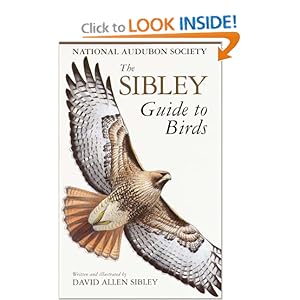With over 10,000 species of birds in the world, 1,000 in North America alone, bird watching can seem like a task that only professionals would be capable of. But it’s helpful to keep in mind that different species are sometimes localized to specific regions of the world. Birdwatching is an outdoor hobby that is second in participants only to gardening, so it can’t really be all that hard. One of the first steps in identifying backyard birds is knowing which species is native to where you live. Once you know this, the best way of attracting those birds to your backyard is getting some bird feeders and filling them with the kind of food that they will eat.
Birds are a lot of fun to watch. The way in which a hummingbird can fly for instance can be very entertaining. Some birds are very graceful and elegant when they fly and that can be a simple joy to watch. And even watching a peacock, which in certain areas can be seen meandering into backyards, can be fun as well. The colors on some of these birds are simply amazing too. A bluebird sitting atop snow is very beautiful, and a parrot sitting or flying just about anywhere is beautiful because of the vast array of colors that it has. And just about any bird flying against the backdrop of trees changing colors in the fall is beautiful.
The way some backyard birds behave socially can be very entertaining. This is especially true when it’s mating season for certain species. Some birds will actually “dance”, hopping from side to side, while others fluff their feathers as is to show off their physical attributes. When a predator is endangering the nest of a Killdeer, it will actually pretend to have a broken wing to lure the predator away from it. All of these mannerisms and more make for some very nice entertainment. It gets even better when you have a lot of bird feeders in your backyard that will attract a lot of different species’ of backyard birds. With the right food in your feeders, you may even attract wild birds that wouldn’t typically venture into someone’s back yard.
When you look at one bird individually, like a woodpecker for example, it can seem pretty interesting. But when you have hummingbirds, finches, and robins all sharing the the same backyard, each specific bird’s characteristics tend to stand out more because you have the others in close proximity that contrast against it. And when you take into consideration that birds are the only other two legged creatures on earth besides us, the watching of backyard birds is taken to a whole new level. Especially when you have your favorites, and who doesn’t, studying them and watching them while knowing of their unique similarity to us makes your hobby even more fun.
If you want to learn more about backyard bird watching, here are some of the best books to learn from, rated by countless happy customers at Amazon.com:
The Audubon Backyard Birdwatcher: Birdfeeders and Bird Gardens – rated 5 stars by over 30 happy customers.
Backyard Bird Watching for Kids: How to Attract, Feed, and Provide Homes for Birds – A fascinating opportunity for children to learn how to attract birds to their own backyards. Backyard Bird Watching for Kids is filled with entertaining and fulfilling projects that allow children to interact with nature while learning about the needs and behaviors of wild birds.
The Backyard Birdsong Guide: Western North America (Backyard Birdsong Guides) – Get to know birds by ear with this engaging, one-of-a-kind book. Discover seventy-five unique species from Western North America as you enjoy their sounds at the touch of a button-reproduced in high quality on the attached digital audio module-while reading vivid descriptions of their songs, calls, and related behaviors.
Bird Songs: 250 North American Birds in Song – Here are splendid color illustrations of 250 species of birds, some showing only the male and others showing both the male and female. With each illustration is a description of the bird’s range in the U.S and Canada and its ecology and behavior. The profiles emphasize the birds’ vocalizations–both songs and calls–which can be heard on an audio component that comes with the book.

Speak Your Mind
You must be logged in to post a comment.